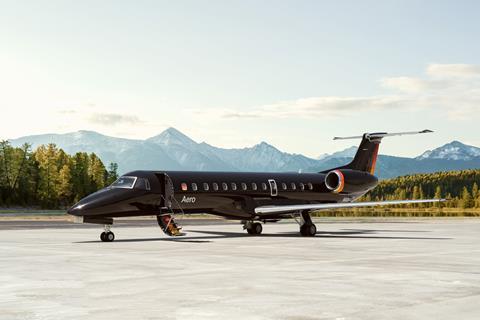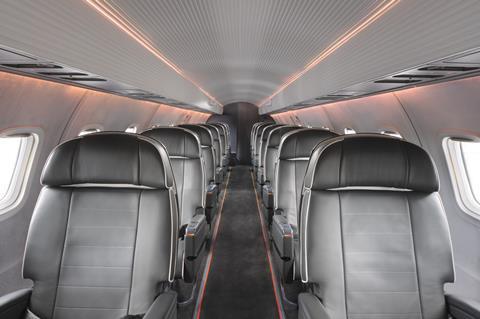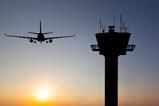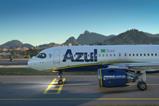Aero occupies airspace somewhere between commercial and private flights. More specifically, it offers air travellers a hybrid of first-class flying and and aircraft charters.
Ben Klein, Aero’s chief executive, told FlightGlobal this month that Aero provides a private jet-like experience without requiring membership or fractional ownership. The idea is borne out of widespread frustration with commercial airlines and strong demand for luxury travel.
“There’s demand for a service that lives between the traditional first-class product and pure charter,” Klein says. “Even if you’re flying a high-quality first class, you still have the airport experience to deal with, which, depending on the length of the flight, could be a significant portion of the journey itself.”

Operating flights out of smaller airports, Aero seeks to avoid busy and crowded terminals and long lines at security checkpoints.
Aero’s “book-by-the-seat model”, in which passengers book separately and fly on the same charter, is resonating with relatively affluent air travellers who are dissatisfied with commercial flights – and are willing to pay more for a premium experience.
“Especially for flights that are in that sweet spot of between two and four hours, it’s a really compelling proposition for a lot of travellers,” Klein says.
Aero’s air fares range roughly from $800 to $1,000 per hour of flying time.
“It can be more than first class, for sure,” he admits. “But in peak demand times, we are very competitive with first-class pricing to markets like Aspen, which can get very high.”
Los Angeles-based Aero has taken a tack similar to that of JSX’s “hop-on jet service” by operating under the FAA’s Part 135 rules for on-demand charter carriers. Those rules do not allow for scheduled flights except under an exemption for public charters, which can flown by airlines using aircraft with 30 or fewer seats.
The rising popularity of public charters has attracted criticism from major US airlines and pilots’ unions, which have decried what they view to be a “loophole” through which charter airlines can avoid security requirements and operating rules applied to scheduled passenger flights.
The Federal Aviation Administration recently signalled intention to subject operators of public charter flights to the same rules that major scheduled airlines must follow.
It is unclear how the proposed rule change stands to affect Aero’s business model moving forward. Klein says it is too early to comment on the subject.
For now, the start-up is focused on growth. Aero flies scheduled routes from Los Angeles’ Van Nuys airport to Aspen, Colorado, Sun Valley, Idaho and Cabo San Lucas in Mexico.
“We fly to premier leisure destinations and we have a lot of second-home owners who are frequent guests going back and forth between those destinations,” Klein says.

Since launching in 2021, the company has also catered to major cultural events such as Stagecoach Festival and Coachella Valley Music and Arts Festival, as well as last year’s Super Bowl in Las Vegas.
Aero’s ERJ-135s, designed for 37-passenger configurations, have been modified to seat 16.
“That gives everyone a first-class seat with plenty of legroom and 150 degrees of recline,” Klein says. “It’s a premium business-jet type of seating arrangement.”
ERJ-135s are right for the mission because of their durability, reliability and relatively reasonable acquisition cost, he says. Designed for regional commercial operations, the aircraft also come equipped with a sizeable cargo hold that can accommodate up to 70 bags.
“We never have an issue with people bringing everything they want to bring, whether it’s golf clubs or skis or multiple bags,” he says
Aero has four ERJ-135s and one Embraer Legacy 600, a business jet derivative of the ERJ family. Klein mentions the possibility of growing the fleet and eventually adding aircraft with “longer legs”.
“In the short term, we intend to launch one or two new routes in 2024 and we hope to add a couple aircraft, as well,” he says.
Those new routes will likely roll out as part of partnerships with hotels, resorts and developers of destination communities. “More in the medium term, we will find a new base to operate out of and bring Aero to another region of the country,” Klein says.
As the start-up expands, it will endeavour to provide passengers with an experience “as good as the end destination of your journey”, he says. ”We want to make the flight portion of your trip just as memorable as where you’re going to stay”.































